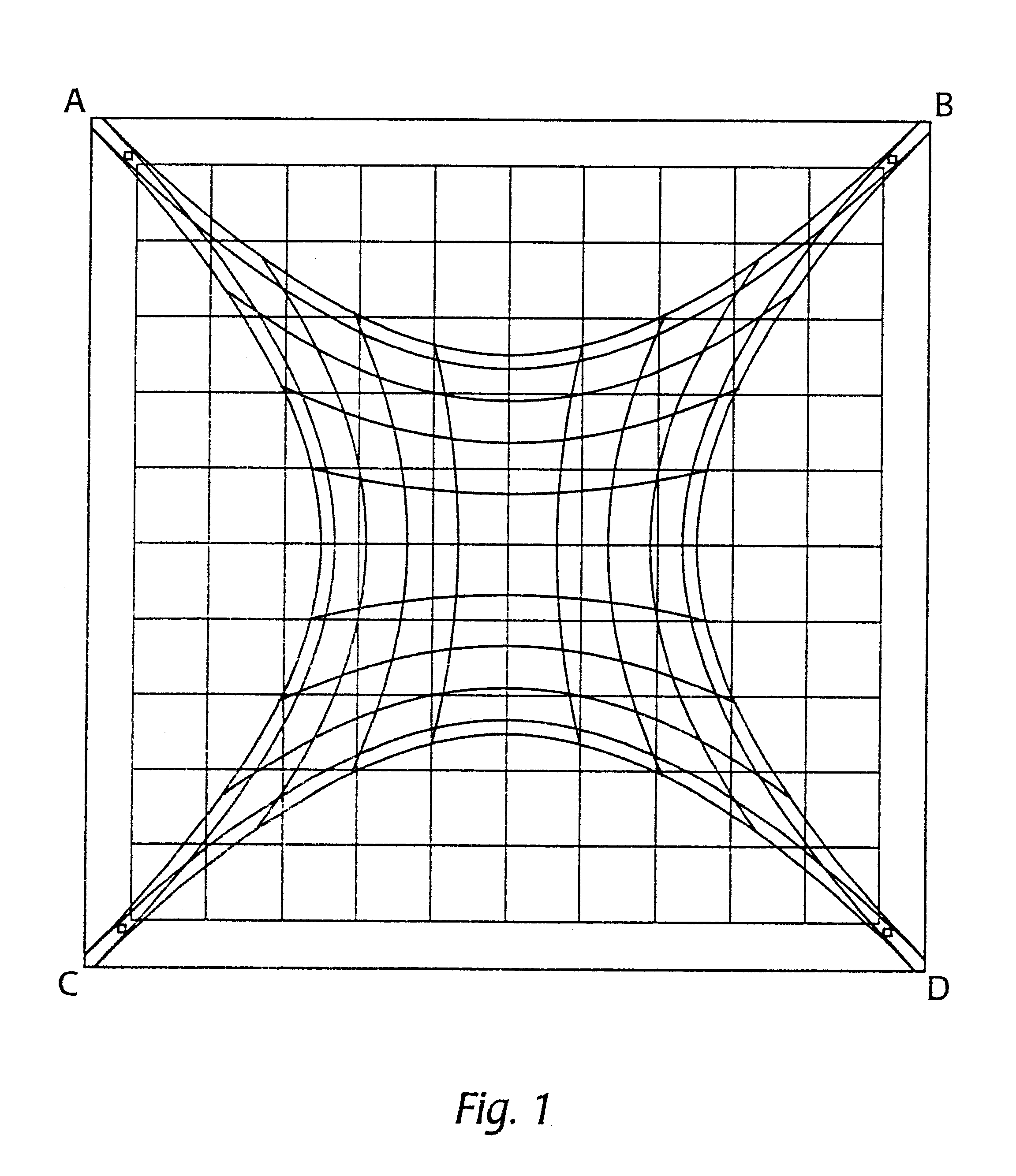Algorithmic compensation system and method therefor for a touch sensor panel
a technology of touch sensor and compensation system, which is applied in the direction of mechanical pattern conversion, static indicating device, instruments, etc., can solve the problems of system employing such substrates, non-linear variation, and non-uniform current density at various portions of substrates
- Summary
- Abstract
- Description
- Claims
- Application Information
AI Technical Summary
Benefits of technology
Problems solved by technology
Method used
Image
Examples
example 2
A conductive surface substrate 110 is provided essentially as in Example 1. However, as shown in FIG. 6, no microcontroller is provided in conjunction with the sensor system. Instead, an analog data acquisition system 200 with an input multiplexer and serial interface is provided which sequentially polls the inputs and transmits the data in serial format through a serial interface driver 202 to a host processor 201, which evaluates the mapping algorithm from the raw data. Upon startup, the host processor 201 reads the contents of a coefficient storage nonvolatile memory 123, through the serial interface driver. After the stored data is transferred, the system then transmits the digitized data from the analog data acquisition system 200.
example 3
The system according to the present invention is also applicable to capacitive touch position sensors. In this case, a constant current RMS AC signal is selectively injected through one of the fixed electrodes on the conductive surface, e.g., 200 .mu.A sinusoidal RMS. The repositionable electrode includes a dielectric barrier material with an impedance to a reference, so that proximity to the conductive barrier contact attenuates the signal at that point, resulting in a variable current loss. The current at each of the other fixed electrodes is measured. The input current is therefore equal to the currents measured at the other corners plus the parasitic losses of the system. When a dielectric touches the surface, a further loss occurs, the position of which may be measured as a function of the three sensed corners.
In another capacitive touch system, a constant current RMS AC signal is selectively transmitted from a touch position to a conductive surface. AC currents at the pluralit...
example 4
As shown in FIG. 11, a substrate 220 is provided having a plurality of force detectors 221. The outputs of the detectors 221 are multiplexed through multiplexer 222 and digitized by analog to digital converter 223. A microcontroller 224 receives the output of the analog to digital converter 223, and determines a position of touch based on a mapping algorithm stored in ROM 226, based on a series of coefficients stored in nonvolatile memory 227 which are derived from an initial measurement procedure and least mean square fitting. The force against the substrate is divided between the detectors 221, with a nonlinear relationship between the touch position and the response of any detector 221. The output response of each detector 221 may also be nonlinear. Further, compliance of the substrate 220 may also produce nonlinearities. The algorithm corrects for the relationship of force location and detector 221 output to produce a corrected results.
PUM
 Login to View More
Login to View More Abstract
Description
Claims
Application Information
 Login to View More
Login to View More - R&D
- Intellectual Property
- Life Sciences
- Materials
- Tech Scout
- Unparalleled Data Quality
- Higher Quality Content
- 60% Fewer Hallucinations
Browse by: Latest US Patents, China's latest patents, Technical Efficacy Thesaurus, Application Domain, Technology Topic, Popular Technical Reports.
© 2025 PatSnap. All rights reserved.Legal|Privacy policy|Modern Slavery Act Transparency Statement|Sitemap|About US| Contact US: help@patsnap.com



